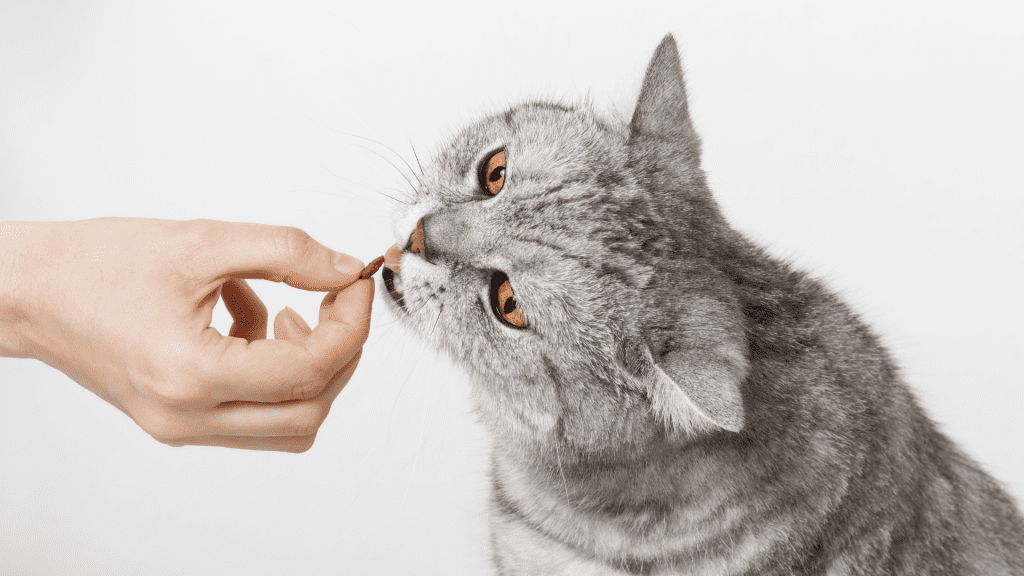Have you ever been halfway through your snack, looked down, and noticed your feline friend giving you “the eyes”? You know, that intense gaze that’s part curiosity, part “I want a piece of that”? It happens to all of us cat lovers, and most times, it leaves us asking, “Can I share this with my cat?” Today’s snack under the microscope is the humble yet irresistible graham cracker.
A sweet, crunchy treat that often finds its way into our pantries and picnic baskets, graham crackers are loved by many. But does this love extend to our feline friends? Can cats share in the simple joy of eating graham crackers? Or could this seemingly innocent act be hiding potential health hazards for our feline companions?
Join us as we dive deep into the world of feline nutrition, dissect the contents of graham crackers, and seek expert opinions to answer this question. So, next time your kitty gives you “the eyes” while you’re enjoying a graham cracker, you’ll know exactly what to do. Buckle up, cat lovers; you’re in for an informative ride!
Can Cats Eat Graham Crackers?
Cats can physically consume graham crackers, but it doesn’t mean they should. Graham crackers are not toxic to cats, but they’re also not healthy for them.
Cats are true carnivores at heart, which implies that their diet must predominantly consist of meat. Their bodies crave protein and rely on specific nutrients such as taurine, predominantly found in meat sources. On the flip side, foods like graham crackers, rich in carbohydrates and sugars, do not align with a cat’s nutritional needs and can potentially lead to health issues like obesity if consumed frequently or in large amounts.
While an occasional small piece of a graham cracker is unlikely to harm your cat, it’s best to stick with treats made specifically for cats. Always remember that any human food should be given sparingly and should never make up a significant portion of your cat’s diet.
Nutritional Analysis of Graham Crackers
Let’s take a gander at graham crackers now. They’re made primarily from whole grain flour, sweeteners like honey or sugar, oils, and sometimes flavorings like cinnamon. Though they may seem harmless enough for us, they don’t exactly scream ‘feline food’.

Graham crackers are high in carbohydrates and sugar, two things that cats’ digestive systems aren’t built to handle. Plus, they have negligible protein, which is a cat’s primary dietary need. The artificial additives, flavors, and high sodium content don’t do any favors either.
Sure, they’re not packed with chocolate or anything toxic to cats, but they’re far from being a healthy treat option. Your kitty won’t gain any nutritional benefits from snacking on graham crackers.
Potential Health Impact of Graham Crackers on Cats
The occasional small piece of graham cracker likely won’t cause serious harm, but it may lead to short-term digestive issues. Think upset tummies, vomiting, or diarrhea – not exactly a party for your fur baby.
Long-term, regularly feeding your cat graham crackers can lead to weight gain, obesity, and even diabetes, owing to the high sugar and fat content. Dental problems could crop up, too, thanks to the sticky, sugary texture.
Finally, just like humans, cats can develop food allergies or intolerances. Your cat might be sensitive to certain ingredients in graham crackers, causing her discomfort or even an allergic reaction.
Cats Eating Graham Crackers Pros & Cons
Are you considering sharing a graham cracker with your kitty friend? Before you do, it’s important to understand both sides of the coin. While graham crackers may seem like a harmless treat, it’s crucial to weigh the pros and cons. So lets take a look
Pros:
- Taste and Texture: Cats may enjoy the taste and texture of the graham cracker, making it a potentially useful distraction or treat in small amounts.
- Convenience: Graham crackers are a commonly available food item in many homes, making them a convenient item to offer as a small, occasional treat.
Cons:
- Nutrient Inadequacy: Graham crackers don’t provide the nutrients cats need. They’re low in protein, which is essential for cats, and lack other nutrients cats need like taurine.
- High in Sugar and Carbohydrates: Cats’ bodies aren’t designed to process high levels of sugar and carbohydrates. Over time, consuming these can lead to health issues such as obesity and diabetes.
- Digestive Issues: Since graham crackers aren’t part of a typical cat’s diet, they could cause digestive issues, like upset stomach or diarrhea.
- Potential Allergens: Graham crackers could potentially contain ingredients that some cats might be allergic to, like certain types of grain or artificial additives.
- Poor Oral Health: The sticky, sugary texture of graham crackers could lead to dental problems in cats.
- Setting a Bad Habit: Regularly feeding cats human food like graham crackers can set a bad precedent, making them more likely to beg for human food and less likely to be satisfied with their regular cat food.
Given these pros and cons, it’s clear that while there may be some minor, short-term benefits to giving a cat a graham cracker, the potential risks and long-term consequences far outweigh them. It’s best to stick with treats specifically designed for cats.
Safe Treat Options for Cats
Rather than sharing your graham cracker, consider opting for cat-specific treats. These are formulated with their dietary needs in mind and are much safer (and probably more enjoyable for your cat!).
You could also consider small pieces of cooked meat or fish as a healthy treat. Always introduce new foods slowly to avoid upsetting your cat’s stomach and make sure there are no seasonings, especially onions or garlic, which are toxic to cats.

Another alternative is commercial catnip. Many cats go crazy for this safe, plant-based treat, and it’s a great way to keep them entertained.
Can my cat eat other kinds of crackers?
Like graham crackers, most other crackers will be high in carbohydrates and won’t offer any nutritional benefit to your cat. It’s always better to opt for cat-specific treats.
What should I do if my cat has eaten a large amount of graham crackers?
If your cat has consumed a large amount, especially if she is showing any signs of distress, contact your veterinarian immediately.
Can I give my cat a small piece of graham cracker?
While a small piece likely won’t harm your cat, it’s generally best to avoid feeding them human food. Opt for cat-friendly treats instead.
Final Thoughts
In a nutshell, while a tiny nibble of graham cracker likely won’t harm your cat, it’s best to avoid making it a regular treat. Your feline friend needs a diet rich in animal protein and specific nutrients, which graham crackers simply can’t provide.
So, next time your kitty gazes longingly at your snack, resist those adorable eyes. Instead, give her a cat-friendly treat that will satisfy her cravings and keep her healthy. Remember, the best way to show love for our pets is through their wellbeing.
What’s your experience with cats and treats? Have you ever fed your feline friend something they shouldn’t have eaten? Share your stories, questions, or concerns in the comments below. Remember, this blog is a space for sharing and learning, but it’s no substitute for professional vet advice when your cat’s health is at stake. Let’s keep our kitties healthy, happy, and well-fed!
